Content |
|---|
Characteristics "Maltese"
Coexistence is important that you have with your new friend. Before considering the acquisition of a dog of the breed "Maltese" you know certain factors. Not all breeds of dogs are apt to live in an apartment, you must take into account his character, their need for exercise, their interaction with other pets, their care and if you have small children, their level of tolerance towards them.
Adaptation ⓘ5.0 out of 5 stars (based on 1 review)
|
friendly dog ⓘ5.0 out of 5 stars (based on 1 review)
|
hair loss ⓘ1.0 out of 5 stars (based on 1 review)
|
|---|---|---|
Affection level ⓘ5.0 out of 5 stars (based on 1 review)
|
Need for exercise ⓘ1.0 out of 5 stars (based on 1 review)
|
Social need ⓘ5.0 out of 5 stars (based on 1 review)
|
Home ⓘ5.0 out of 5 stars (based on 1 review)
|
Toilet ⓘ5.0 out of 5 stars (based on 1 review)
|
Friendly with strangers ⓘ5.0 out of 5 stars (based on 1 review)
|
barking ⓘ5.0 out of 5 stars (based on 1 review)
|
Health ⓘ3.0 out of 5 stars (based on 1 review)
|
Territorial ⓘ4.0 out of 5 stars (based on 1 review)
|
Cat friendly ⓘ5.0 out of 5 stars (based on 1 review)
|
Intelligence ⓘ5.0 out of 5 stars (based on 1 review)
|
Versatility ⓘ3.0 out of 5 stars (based on 1 review)
|
Child friendly ⓘ1.0 out of 5 stars (based on 1 review)
|
Surveillance ⓘ3.0 out of 5 stars (based on 1 review)
|
joy ⓘ4.0 out of 5 stars (based on 1 review)
|
History
The Maltese It is a canine breed that has existed since ancient times and was already widespread in Mediterranean cultures.. But, contrary to what its name might suggest, its exact origin remains uncertain, but it seems to come from one of the countries of the Mediterranean basin. Along its history, it has been given many names, as Melitae Dog, Ye Ancient Dogge of Malta or Maltese Lion Dog. But, Today it is mainly known as Maltese or Maltese dog.
Archaeological finds tend to confirm that the Maltese it even existed in ancient egypt. In fact, in a tomb dating from the reign of Ramses II (1304 a.C. to 1214 a.C.) a statuette was found representing a dog that looks like him in everything. So, we can assume that the Egyptians considered it a sacred animal.
Maybe because, like Europeans later, they thought it was capable of curing diseases, or at least they discovered that he was able to calm the sick by snuggling up next to them.
They weren't the only ones who honored him, since the Greeks also built graves for their deceased dogs. The dog was also found in ancient Greece, to the point that the famous philosopher Aristotle (384 a.C. – 322 a.C.) mentioned it in his zoological work History of animals. He mentioned a breed of small dog that he called in Latin canes melitenses, that means “Maltese dog”.
Before the beginning of the Christian era, Maltese was also very popular with the Romans. Many noblewomen owned one and never went out without it.. They wore it on the bodice or sleeve, as a jewel or an accessory. This trend continued well beyond ancient Rome.
In the 1st century, Roman Emperor Claudius (10 a.C. – 54 d.C.) he was probably the most famous Maltese owner. Regarding St. Publius (33 d.C. – 112 d.C.), Roman governor of Malta who owned a Maltese named Issa, asked the poet Marcial to write a eulogy for his dog, what he did in his Epigrams collection.
The Maltese came to the British Isles during the reign of Henry VIII (1491-1547), and there he also became very popular among the upper classes, especially among women, who used him as a companion and lap dog. It was appreciated for its beauty, while its small size allowed them to easily carry it on their blouses. It was especially adopted by Queen Elizabeth I (1533-1603).
Although it survived many wars and conflicts over the years, the breed was about to disappear around the seventeenth and eighteenth centuries, after unfortunate attempts to miniaturize it to the maximum. To save her it was necessary to cross with the Poodle, Small Spaniels and Asian Miniature Dogs.
Despite its success and presence in many countries, the breed was not introduced to North America until the 19th century. However, one of its representatives (white) was present at the first dog show in the history of the United States, the Westminster Kennel Club Dog Show, which was held for the first time in 1877. There it was shown with the name of Maltese Lion Dog.
The breed was soon recognized by the American Kennel Club (AKC), already in 1888. But, was not up 1948, 60 years later, when the other most important canine organization in the country, el United Kennel Club (UKC), he did the same. But, American organizations were more active than the Fédération Cynologique Internationale (FCI), who waited until 1955 to recognize the Maltese.
Physical characteristics
They weigh between 1,8 and 4 kg. Being the maximum weight in adulthood of 3 kg in females and 4 kg in males. Its height is of 20 to 25,5 cm., and they have a compact body.
The Maltese it is a small dog with a noble and elegant appearance, and a fluid and graceful walk.
Your body is well proportioned, his chest is quite deep and his ribs are well sprung.
Like other Spitz breeds, its tail curves between the hips until it touches the rump. Carries high and can be curved sideways.
The head is proportional to the size of the body. The skull is slightly rounded and quite wide between the ears. The ears are set low and triangular in shape. The eyes are round and dark brown, with a soft but alert look. The eyelids conform to the eyeball and are pigmented black. The muzzle is fine, average length, and ends in a black nose.
The coat of the Maltese It is thick, shiny and silky. No undercoat, but a layer of long straight hair all over the body, no waves or curls. On the sides, hangs to the ground, which almost gives the impression that the dog is floating.
The fur is white, but a shade of ivory and lemon strokes are allowed. Until the end of the 19th century, it was even possible to use other coat colors. But, at that time, all colors other than solid white were deprecated, so breeders focused solely on individuals with white fur.
As they have no undercoat and shed relatively little, Maltese are often considered a hypoallergenic breed. Although none of them are hypoallergenic, they are usually well tolerated by people allergic to dogs. However, This does not exempt any potential adopter who suffers from this allergy from carrying out a test in real conditions before taking the step..
Last, sexual dimorphism is not very pronounced in this breed: males and females are about the same size.
Some breeders offer the Maltese miniature, whose weight is around 2 kg, or even less. These dogs not only don't conform to the breed standard, Rather, this extreme miniaturization is often accompanied by genetic problems and, in general, health risks. So, you better stay away from them.
In comparison to the Yorkshire Terrier or the Chihuahua, the Maltese you are not as likely to have fingernails or other diseases that can shorten your life.
Popularity
Still today, the Maltese it is still very popular and is present all over the world.
In United States, is around the post 30 (out of a total of 195) in the breed ranking established by the American Kennel Club (AKC) according to the number of births registered each year in the organization. But, this marks a steady decline from, at least, early 21st century, when I was about the twentieth position.
At the same time, on the other hand, has greatly increased its popularity in the UK: while in the middle of the decade of 2000 there were some 400-500 Annual Kennel Club Enrollments, This figure is around the 1100, and has been fairly stable since 2012.
The situation is different in France, since the number of annual entries in the French Origin Book (LOF) almost never stopped increasing for at least half a century. He was in his early twenties 70, a quarantine at the end of this decade, and then multiplied by ten during the 80, until exceeding 400. The trend continued over the years 90, until it stabilized around the 600 at the end of the decade and, Therefore, at the beginning of the 21st century. This trend continued until the decade of 2010, characterized by an increase in 50%, ending with more than 900 births per year.
In Switzerland, it is the 13th most popular breed in the country. There are more than 7000 people registered in the Swiss Amicus database.
Did you know??
The sweet little one Maltese dog is the favorite of celebrities, including Halle Berry, Heather Locklear y Eva Longoria. Could it be because they are so adorable in photographs? We think so.
Character and skills
"Maltese" |
||
|---|---|---|
Kind, loving and affectionate with their masters, the Maltese he is also very attentive to his emotions, and is able to comfort them in difficult times. He is very active and maintains a youthful spirit all his life..
Your attachment to family is so strong that it can be problematic if you are alone too often or for too long. In fact, does not tolerate loneliness well and, therefore, you are likely to suffer from separation anxiety in such circumstances, what can drive, for example, destructive behavior or incessant barking. So, not suitable for a teacher who spends most of his days away from home.
Have him share his home with another dog or with a representative of another species (cat, rodent, bird…) it is a good way to help you better cope with the absences of your masters. But, this is only possible if you have grown up together or if you are used to living with other animals since childhood. In fact, in the event that another animal comes one day to your family, they are likely to be jealous and do not appreciate having to share their master's attention with another animal. In any case, given its small size, it is not advisable to make him live with a large congener, since it could inadvertently hurt you, for example just playing with him.
Its small size and fragile bone structure also explain why it is not recommended to live with young children.. In fact, the latter are quick to have too abrupt gestures towards him, especially during playtime, and could inadvertently hurt you. It also, even if it's not like that, may become scared and overwhelmed when faced with young children who are moving around a lot and making noise, which could cause inappropriate reactions on your part. In any case, a small child should never be left alone with a dog without adult supervision, regardless of race.
Not content with being around family members, the Maltese he's kind to strangers too, as long as I see there is nothing to fear from them. But, this does not prevent you from barking when you perceive a threat or a stranger approaching your home, which makes him a very good alert dog.
The Maltese's need for exercise is very moderate, making it a good breed for older people. Half an hour of activity a day is more than enough, for example, two or three short walks a day and / or small play sessions. But, he also likes dog sports like agility, obedience and rally, but its resistance is limited. In any case, he is always delighted to discover new things and learn new tricks.
As soon as you exercise enough, is quiet, able to adapt to any living space, and is delighted to spend long periods of time with his master, receiving pampering. It is therefore a breed of dog adapted to apartment living., who can be happy both in the city and in the country, in a big house with a garden. But, not made to spend most of the time outside. This is especially true in winter, since its lack of undercoat makes it sensitive to cold. But also the rest of the year, because its small size can make it prey for potential predators (birds Raptors, foxes…), plus the risk of it being stolen by malicious people. In any case, it is not about relegating it abroad, away from his family: accustomed for centuries to living in the heart of homes and loving to be the center of attention, you need to live and interact with your family to be happy and balanced.
Observations
Unlike other dogs the Maltese need little physical activity, What are good candidates for older people. Hunting mice, and they keep them away from the House.
Taking them for a walk would also serve to make them sociable since they do not require much exercise, adults should keep the weight and the best way to do this is by controlling what you eat and taking them for a walk. We must pay attention to the hair, and the help of a dog hairdresser may be required from time to time. You must be careful with approaching other dogs that are very nervous and are uncontrollable.
They can make stunts, How to keep standing on their hind legs for several minutes. Although perfectly adapted to living in apartments for its small size and domestic, love to walk in the open air. To be a difficult race, about all when they are puppies, they require many care. It is recommended to feed with feed, and though loves food human should never be given chocolate, It is highly deadly to this race.
Education
Like any dog, the socialization of Maltese must start at a very young age, period during which it is more malleable and adaptable. It is advisable to make you know as many different individuals and animals as possible, as well as exposing him to all kinds of situations and environments. This is essential for it to be an animal with a good head and serenity in all circumstances..
At the same time, given the very strong level of attachment to their humans that characterizes this breed, teaching the puppy to endure loneliness is part of the priorities of their education, to avoid that the absences of their masters suppose a later problem.
The Maltese he is smart and likes to please his owners. But, sometimes he is stubborn, which can complicate the learning sessions a bit. Ideally, opt for the positive reinforcement training method, since they are not receptive to reprimands and respond much better to stimuli and treats. But, it is important not to abuse the treats or discount them from your dog's daily intake to avoid weight gain.
In any case, you can't miss inappropriate behavior (grunts, barking, aggressiveness, refusal to obey…) when he is young, with the argument that it is small, beautiful and harmless. This would be the best way to make him develop the “small dog syndrome”, that is to say, get used to doing what you want in any circumstance, and become dominant, aggressive and difficult to live with. So, its owner must be firm from the start and make sure to establish - and enforce- clear rules, long-term constant and applied uniformly by all household members.
Health
The Maltese they are generally robust and healthy dogs.
But, due in particular to the absence of an undercoat, it is particularly sensitive to cold and humidity. When temperatures are cold, should be covered with adog coat.In any case, you are not meant to live in an area where the weather is cold for much of the year.
It also, of course, not completely free from health problems, many of which are common to other small breeds.The conditions to which you are predisposed are:
- The Hip Dysplasia, joint malformation whose appearance can be enhanced by a hereditary predisposition, produces pain and lameness in the hips and causes the appearance ofosteoarthritiswhen the animal gets old;
- The dislocation of the patella (or dislocation of the patella), common in dogs. It occurs when the kneecap moves in or out of the knee and can cause pain or lameness of varying degrees of severity. In the most severe cases, an operation is necessary;
- The tracheal collapse, a respiratory disease that mainly affectssmall dogsand corresponds to a reduction in the diameter of the trachea. The most common sign is a dry and chronic cough, but it can also cause great shortness of breath. If necessary, it may be necessary to place a prosthesis;
- The cryptorchidism, often a hereditary defect that prevents the animal's testicles from descending into the scrotum. The only solution then is to remove them surgically to avoid further complications, which leads to the sterilization of the animal;
- Congenital portosystemic derivation, a vascular abnormality that can cause growth retardation, weight loss or even neurological problems and / or digestive.In some people, the symptoms are subtle, which makes the diagnosis of the disease later. This pathology, whose cause may be hereditary, can be cured by surgical intervention;
- Hydrocephalus, a disease of nervous system in dogs.Symptoms vary from individual to individual (bulging head, growth retardation, nervous disorders, etc.), but the vital prognosis is never very good;
- shaking dog syndrome, a disease that mainly affects small dogs in white coats. It consists of inflammation of the cerebellum and causes attacks of involuntary tremors throughout the body and lack of coordination. The symptoms usually begin to appear between the 9 months and 2 years and can be reduced, or even disappear, with drug treatment;
- Hypoglycemia, which mainly affects diabetics and corresponds to a significant decrease in blood glucose level. The symptoms of the problem are loss of appetite, lethargic state, tremors and unsteady gait, in the most severe cases, can lead to coma and then death of the animal, if you are not given sugar one way or another;
- The Cushing's disease, a hormonal disease whose most common clinical signs include increased appetite, thirst and amount of urine produced, muscle atrophy or the appearance ofalopecia;
- The gradual retention atrophy, an incurable inherited disease that consistently affects both eyes at the same time, causing retinal degeneration and progressive loss of vision, at night and then day;
- The glaucoma, an eye disease that can be inherited and causes degeneration of the optic nerve and retina due to abnormally high pressure in the eye. This painful pathology for the animal rapidly evolves into total or partial loss of sight, unless it is attended urgently;
- The waterfall, It mainly affects the elderly and is a clouding of the lens Causes vision disturbances, up to total loss of sight if uncontrolled, only an operation can allow the animal to regain good vision;
- The otitis, frequent inflammation indogs with floppy ears.
It also, the Maltese is easily susceptible to obesity, that can cause or aggravate many existing pathologies, and therefore have a very negative impact on your health. This is all the more true as it constitutes a vicious circle., because an overweight dog becomes less active and, Therefore, being overweight tends to increase.
Finally, even if it is not strictly speaking a disease, is also subject to reverse sneezing (or reverse sneezing).This is manifested by short-lived seizures during which you make loud noises when you inhale that may give the impression that you are choking. Seizures are usually rare and harmless., if they repeat too often, a veterinarian should be consulted to confirm that it is not another condition.
Although the list of diseases the breed is predisposed to can be terrifying, It must be taken into account that its prevalence is low and that most people lead perfectly healthy lives. This is also confirmed by a study carried out in 2004 by the Kennel Club and the British Association of Small Animal Veterinarians, as old age was found to be the leading cause of death in this breed, on a par with cancer. Cardiac causes rank third and together account for more than half of the observed deaths.
The number of diseases to which the breed is predisposed that are or may be hereditary, choosing acreator of Malteseshould not be left to chance: directly influences the probability of obtaining a healthy animal and that it continues to be so., in addition to ensuring thepuppy socialization from its first weeks, A serious breeder refrains from reproducing an individual capable of transmitting a hereditary affection to all or part of his offspring., must be able to present the results of DNA tests performed to parents (and possibly the young) and that they demonstrate that they are free from hereditary defects., it is better not to take unnecessary risks and turn to another breeder., You must also provide a certificate of good health established by a veterinarian as well as details of the vaccinations received, recorded in the puppy's health or vaccination registry.
Later, it is strongly recommended not to make him make prolonged or excessively intense physical efforts during his growth, period when your bones and joints are still very fragile. You would risk injury or malformations, potentially with lifelong consequences. This is even more important because you are predisposed to various joint problems:dislocation of the patella,Hip Dysplasia,etc.
Finally, like any dog, should be taken at least once a year to the vet for a complete checkup, that sometimes you can detect a problem that is still embryonic and treat it as best as possible.It is also an opportunity to perform the necessary booster injections.. At the same time, to prevent the risk of parasites and the multiple diseases that accompany them, your teacher should make sure to renew your deworming treatments throughout the year, whenever necessary.
Life expectancy
15 years
Grooming
The coat of the Maltese requires a lot of daily care. In fact, to avoid knots and keep it clean and shiny, it is advisable to brush it every day with a special brush or glove and use a detangling and revitalizing spray. But, the absence of undercoat means that it is not subject to seasonal shedding and that it loses very little.
The length of her hair makes dirt build up easily, so it tends to quickly give off bad odors. To remedy it, it is necessary to wash it on average once a month. But, you must not go any further: excessive frequency could harm the balance of your skin, by eliminating the sebum that it produces naturally and that protects it from skin problems. It also, systematically use a shampoo specially designed for dogs, also with the risk of damaging your skin, and avoid wetting the inside of your ears, as they are especially prone to ear infections and other infections.
It is also recommended not to let the hair air dry, but clean it directly with a towel after bathing, so that its coat is beautiful once dry.
It also, to avoid being embarrassed by the length of your hair at eye level, it may be a good idea to tie it at the top of the head with a small elastic band or a hair clip.
So that daily detangling is less heavy, It may also be a good idea to take your dog to a professional groomer every one to two months for a short haircut., or do it yourself, for the most skilled. Helps keep the coat neat, prevents dirt from accumulating on the hair and prevents bad odors, common when the coat is long.
It also, hair between the pads and around the ears and eyes should be trimmed once a month to reduce the risk of infection caused by any small plants or spikes that may be stuck in the fur.
You also have to pay special attention to their droopy ears., since this morphological characteristic increases the risk of infections at this level (otitis, etc.). So, they must be inspected and cleaned once a week, and get into the habit every time they get wet or moisture builds up on them.
The weekly maintenance of your ears is also an opportunity to check that there are no tear stains at the corner of your eyes., due to a blocked tear ducts, a very common problem in Maltese. Then, just clean them with a special lotion or with a cotton pad soaked in physiological serum, and then gently wipe them with a cloth. In case of constant and / or continuous discharge, a veterinarian should be consulted.
Looking at your teeth, they must be cleaned with a dog toothpaste at least once a week, using a toothbrush or finger bowl. This routine is important to prevent tartar buildup and the problems it can cause: bad breath, diseases, etc. The ideal for optimal oral health is even to do it several times a week, or even every day.
Utility
The Maltese It is one of the oldest companion dog breeds in the world., fulfilling this function since ancient times. Her beautiful fur, its small size, his friendly temperament and the fact that he is a very calm breed of dog made him a very popular companion for women of high society, as well as many historical figures, both in antiquity and in Renaissance Europe and subsequent centuries. He even had a reputation for healing the sick., or at least alleviate them. In other words, the important place he occupied in his master's life was not new.
In fact, things haven't changed much nowadays, since they are mainly used as companion dogs. But, needs their owners to be present enough by their side on a daily basis, in addition to having time to dedicate to its maintenance.
They are often recommended for people with allergies to dogs, since their lack of undercoat and their moderate shedding make them a fairly hypoallergenic companion. But, keep in mind that no race is 100% hypoallergenic, since all dogs produce dandruff, and there may be quite noticeable differences between individuals, even within the same litter. So, Anyone who suffers from this type of allergy and wishes to adopt a Maltese must first spend a few hours with the proposed animal, to make sure no allergic reaction occurs.
It also, its small size, its shiny white fur, his elegance and graceful gait make the Maltese a must-have in beauty pageants, where he wins prizes very often. But, if you want to expose your dog to a dog show, you better have plenty of time for grooming sessions, since the maintenance of the Maltese coat for this type of event can be time consuming.
Perhaps a more enjoyable way to spend time with him is to train him in various dog sports. In fact, his desire to please his master and his liveliness make him a good competitor in agility competitions, obedience, rally and crawl.
Last, your kindness and kindness, as well as his cheerful and attentive character, make it sometimes used as a therapy dog, since his temperament facilitates contact with the sick.
Price
The price of a puppy Maltese varies between the 650 and 2500 EUR, being the average of about 1600 EUR, without great differences between males and females. Whether in Europe, It is not very difficult to find a Maltese breeder, because they are numerous.
In United States, the offer is wide and the price is similar. You just have to make sure you respect the regulations regarding the importation of a dog from abroad, and keep in mind that transportation costs and administrative fees are added to the purchase price.
Whatever the place, the price difference from one individual to another is explained, in particular, by the greater or lesser conformity of each with the breed standard. The kennel's prestige also comes into play, as well as the lineage from which they descend.
Images “Maltese”
Videos “Maltese”
Type and recognitions:
- FCI CLASSIFICATION: 65
- Group 9: companion dogs.
- Section 1: Companion dogs.. Without working trial..
Federations:
- FCI – Group 9 Section 1 ⓘ
- AKC – Toy Group ⓘ, ANKC ⓘ
- ANKC – Group 1 (Toys) ⓘ
- CKC – Group 5 – Toys ⓘ
- KC – Toy ⓘ
- NZKC – Toy ⓘ
- UKC – Company ⓘ
FCI breed standard "Maltese"
Alternative names:
1. Maltese, Sleeve Dog (English).
2. Bichon maltais (French).
3. Malteser (German).
4. Maltês, bichon maltês (Portuguese).
5. Bichón maltés, Maltaise, Couton, Mini Maltés, Pulguis (español).

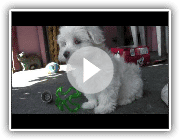 Maltese Puppies – 8 weeks old
Maltese Puppies – 8 weeks old Snowy & Crystal
Snowy & Crystal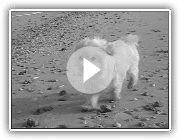 Mysterious Maltese
Mysterious Maltese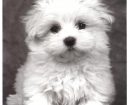




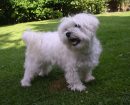
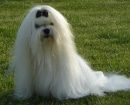

 Bichon Maltais – My adorable small Bichons.
Bichon Maltais – My adorable small Bichons.
We live on costa blanca Spain, and are wanting a Bichon/Maltees puppy (femal) please could you help us to find our companion.
I DON'T CARE HOW MUCH MONEY IS BICHON. I'M LOOKING FOR A DOG SOUND INTELLIGENCE….
I LOVE THE DOG –‘BICHON’–.
I WANT TO BUY IT. ME PLEASE AND TELL ME IF... U.. HAVE A SALES.
Ardiana Xhafa
Please, If you have a Bichon dog for sale let me know that…